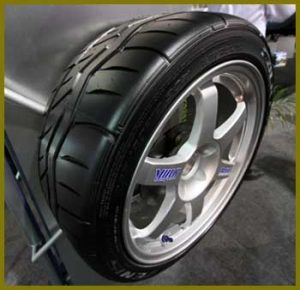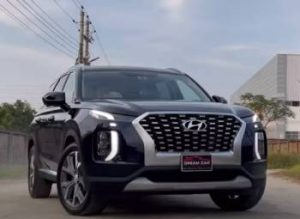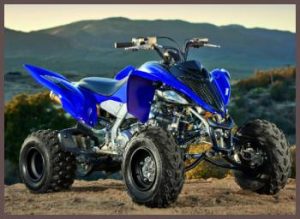When it comes to upgrading your vehicle’s braking system, two popular choices are LEED Brakes and Wilwood brakes.
Which one of these two brands suits you the best? Both of these companies are known for offering high-quality braking solutions.
In this thorough post, We will examine the distinctions between these two brands so you can be selecting the one that best meets your requirements.
Get ready to learn everything you need to know about LEED and Wilwood brakes!
A Brief Comparison Table
| Feature | LEED Brakes | Wilwood Brakes |
| Target Applications | Classic cars and muscle cars | Street, strip, track, and racing vehicles |
| Performance | Reliable stopping power for street and occasional track use | Superior stopping power, heat dissipation, and fade resistance |
| Installation | Complete kits for easy installation | Easy to install, but may require more customization and fabrication for some applications |
| Compatibility | Wide range of classic car and muscle car models | Broad range of vehicle types, including newer models and racing applications |
| Price | Competitive pricing, good value | Premium pricing for high-performance applications |
| Disc Brake Conversion Kits | Yes | Yes |
| Master Cylinder Upgrades | Yes | Yes |
| Made in | USA | USA |
Key Differences Between LEED And Wilwood Brakes
- Performance Differences: Stopping Power and Consistency

LEED Brakes specializes in designing and manufacturing disc brake conversion kits and performance brake upgrades for classic cars and muscle cars.
Their goods are renowned for their robustness, dependability, and stopping ability.
The attention to detail that LEED Brakes exhibits in making certain that each component in their kits is of the highest caliber is one of their distinguishing qualities.
In terms of performance, LEED Brakes offers a range of options to cater to various driving conditions and preferences.
From street driving to occasional track use, their braking systems provide consistent and reliable stopping power.
Wilwood is a leading name in the high-performance and racing brake market, offering an extensive range of products for street, strip, and track applications.
For drivers and racers who value performance, their brake systems are built to deliver optimum stopping force, heat dissipation, and fade resistance.
With Wilwood brakes, you can expect outstanding braking performance, even under the most demanding conditions. Their advanced materials and manufacturing processes result in brake systems that offer superior heat management and friction characteristics.
Also Read: Differences Between eLINE And PowerStop Brakes.
- Installation and Compatibility
One of the main advantages of LEED Brakes is their focus on providing complete disc brake conversion kits, making the installation process straightforward and hassle-free. By including all required parts and hardware in their kits, they ensure that you have all you need for a flawless installation.

Additionally, LEED Brakes designs their kits to be compatible with a wide range of classic car and muscle car models, so finding a suitable option for your specific vehicle is relatively easy.
Wilwood offers a variety of brake kits and components that cater to different vehicle types and applications.
While their products are designed for easy installation, some applications may require more customization and fabrication than others.
It’s worth noting that Wilwood brakes are often compatible with a broader range of vehicles, including newer models and those used in racing applications. Finding the ideal fit for your particular car, though, can necessitate extra investigation and preparation.
- Price and Value
LEED Brakes offers competitive pricing for their disc brake conversion kits and performance brake upgrades. Though not the cheapest, their products offer great value in quality, performance, and installation.
Wilwood brakes are typically more expensive than LEED Brakes, but they offer premium performance and are designed for more demanding applications. The extra expense can be justified if you want the best braking performance available.
Frequently Asked Questions (FAQ)
Yes, Wilwood brakes are known for their exceptional quality and performance. They are a popular option for drivers and racers that are focused on performance because they are made to offer the most stopping power, heat dissipation, and fade resistance.
In most cases, Wilwood brakes offer significant improvements over stock braking systems. They are designed for high-performance applications and provide superior heat management, friction characteristics, and stopping power.
Wilwood brakes are made in the USA. They design, manufacture, and assemble their high-quality braking systems and components in Camarillo, California.
It’s generally recommended to upgrade the master cylinder when converting from drum brakes to disc brakes. This is because disc brakes require higher fluid pressure and volume than drum brakes, and an upgraded master cylinder is designed to meet these requirements. Both LEED and Wilwood offer master cylinder options that are compatible with their disc brake conversion kits.
No, Wilwood specializes in high-performance disc brake systems and components. They do not manufacture drum brakes. However, they offer a wide range of disc brake solutions for various applications, including street, strip, and track.
Also Read: The Tale of Transit Auto Brakes.
In Conclusion
Both LEED Brakes and Wilwood brakes offer high-quality braking solutions, but they cater to different needs and preferences. LEED Brakes specializes in disc brake conversion kits and performance brake upgrades for classic cars and muscle cars, offering a combination of durability, reliability, and stopping power.
Their kits are made to be simple to install and suitable for a variety of cars.
On the other hand, Wilwood focuses on high-performance and racing brake systems, providing maximum stopping power, heat dissipation, and fade resistance. Their products are ideal for performance-oriented drivers and racers who require superior braking performance under demanding conditions.
Ultimately, the choice between LEED and Wilwood brakes depends on your specific needs, preferences, and budget. LEED Brakes may be the best option for you if you’re searching for a dependable and simple way to upgrade the braking system on your vintage vehicle.
Wilwood brakes, however, can be the best choice if you’re looking for the best performance and don’t mind spending a little bit extra.
No matter which brand you choose, remember that proper installation and maintenance are crucial for ensuring the longevity and performance of your braking system.
When in doubt about any step of the installation procedure, always seek professional advice. For correct care and upkeep, always adhere to the manufacturer’s instructions.



